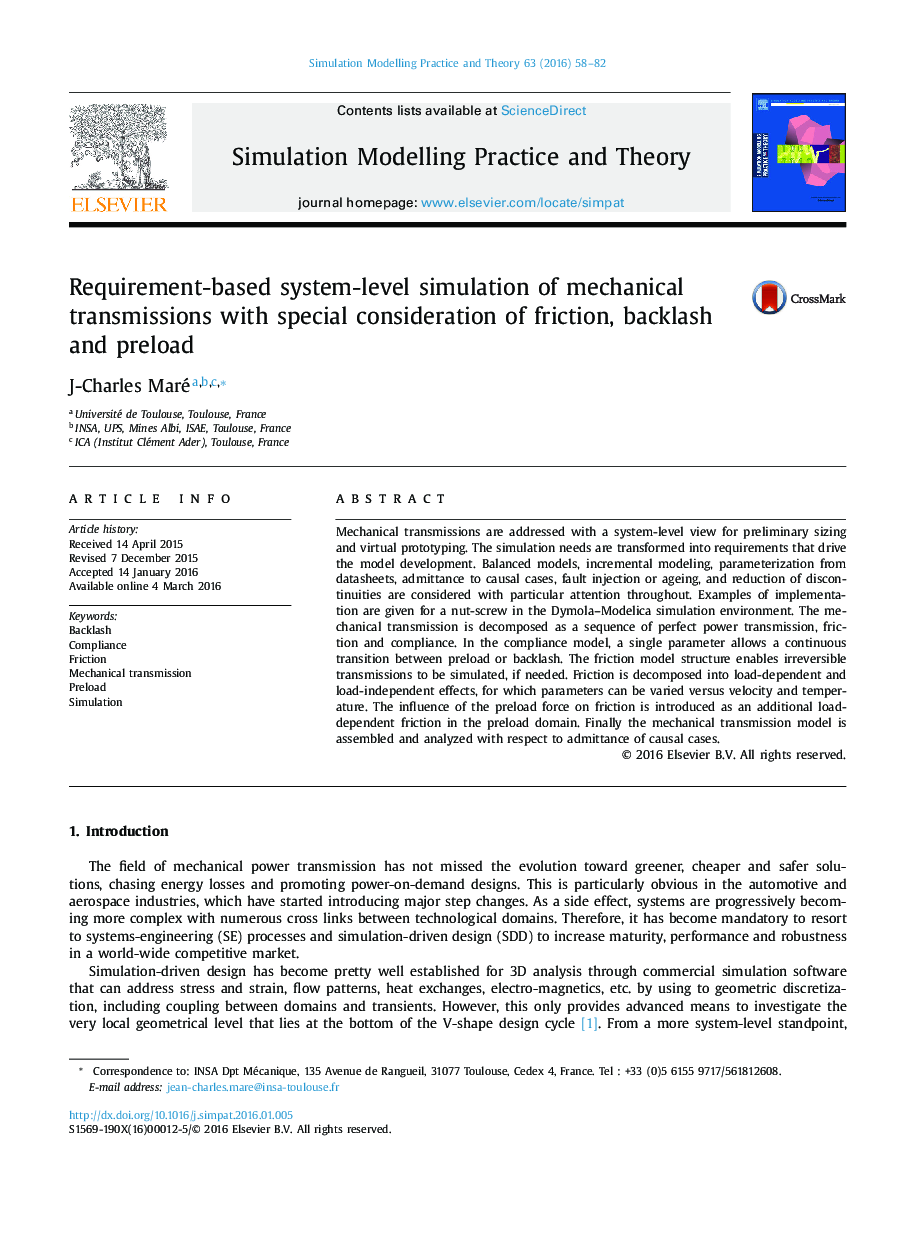| Article ID | Journal | Published Year | Pages | File Type |
|---|---|---|---|---|
| 491721 | Simulation Modelling Practice and Theory | 2016 | 25 Pages |
•Model development is driven by engineering needs and transformed into requirements.•Impact of order of decomposition of basic effect is addressed.•Friction model works for irreversible transmissions and depends on preload.•Jamming and free-run faults are modeled at a system level.•All causal cases are addressed.
Mechanical transmissions are addressed with a system-level view for preliminary sizing and virtual prototyping. The simulation needs are transformed into requirements that drive the model development. Balanced models, incremental modeling, parameterization from datasheets, admittance to causal cases, fault injection or ageing, and reduction of discontinuities are considered with particular attention throughout. Examples of implementation are given for a nut-screw in the Dymola–Modelica simulation environment. The mechanical transmission is decomposed as a sequence of perfect power transmission, friction and compliance. In the compliance model, a single parameter allows a continuous transition between preload or backlash. The friction model structure enables irreversible transmissions to be simulated, if needed. Friction is decomposed into load-dependent and load-independent effects, for which parameters can be varied versus velocity and temperature. The influence of the preload force on friction is introduced as an additional load-dependent friction in the preload domain. Finally the mechanical transmission model is assembled and analyzed with respect to admittance of causal cases.
